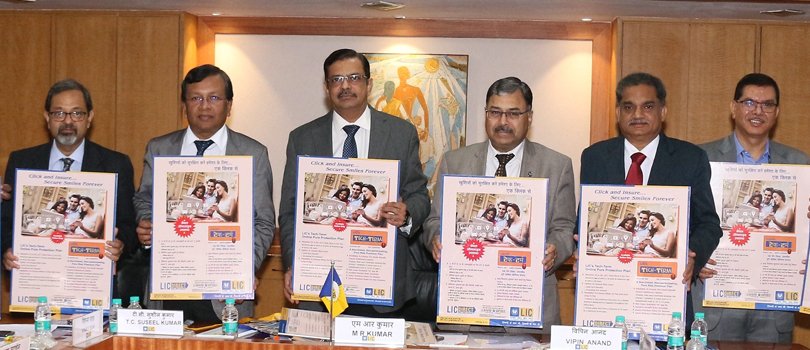 15-01-2020
15-01-2020
Jeevan Saral: LIC Pays Up Rs26.67 Lakh After Chairman is Summoned by Consumer Commission

 Insurance Alertss
Insurance AlertssJeevan Saral: LIC Pays Up Rs26.67 Lakh After Chairman is Summoned by Consumer Commission
In a major breakthrough for consumers, the insurance behemoth, Life Insurance Corp of India (LIC), paid up Rs26.67 lakhs, which was the entire money owned to a Jeevan Saral policy holder, when the Maharashtra State Consumer Commission issued a summons to its chairman.
Noted consumer activist and columnist Jehangir Gai fought this case and helped Deepak Rajmal Kothari to get entire maturity value as mentioned on the policy, loyalty bonus and 9% interest.
Mumbai-based Deepak Rajmal Kothari had taken LIC's Jeevan Saral Policy (with profits). The policy mentioned the maturity value as Rs25 lakh, death benefit as Rs3,94,900, and accident benefit as Rs15 lakh. For the 11 year term, Mr Kothari paid total premium of Rs13.65 lakh to LIC. However, after maturity LIC offered to pay just Rs3.94 lakh plus Rs1.68 lakh as profit or loyalty addition. When Mr Kothari contested, LIC told him that due to typographical error, the maturity and death benefit values had got interchanged in his Jeevan Saral policy. Thousands of policy holders feel badly cheated by the Jeevan Saral policy and it is an issue that Moneylife Foundation had taken to the Supreme Court. However, consumer courts have proved the better forum because LIC has not succeeded at the national commission and has avoided going back to the Supreme Court.
LIC's Jeevan Saral, which used to be a hot-selling insurance product for agents, until it was withdrawn, is a controversial product. In fact, Jeevan Saral was a traditional product that could make the entire premium (money paid) disappear! This can happen in many policies during surrender or making it ‘paid-up’, but, in the case of Jeevan Saral, it has happened even at policy maturity. Responding to an application filed under right to information (RTI) act, LIC had admitted that during 4 February 2004 to 30 September 2017, total number of policies completed under its Jeevan Saral plan are 4,97,45,861 (4.97 crore).
Moneylife Foundation sent a memorandum to IRDAI on 18 August 2018, pointing out that Jeevan Saral (with profit), a traditional policy, has caused senior citizens to lose as much as 65% to 70% loss of the money invested over 10 years. Coming back to the big success at the State Commission, Mr Gai says, "LIC had approached the National Consumer Disputes Redressal Commission (NCDRC) against the decision from Maharashtra State Consumer Redressal Commission. However, LIC's appeal was dismissed by the NCDRC. Finally, we initiated execution proceedings for holding the chairman and managing director of LIC criminally liable for wilful disobedience of the order. And as soon the summons were served through the police, LIC complied and paid up the entire amount."
On 27 July 2015, LIC also issued a circular asking all its offices to retrospectively correct all the Jeevan Saral Policies issued from 2003 onwards. Mr Gai says the state consumer commission rejected LIC's contention and asked the insurer to pay Rs26.67 lakh with an interest of 9% per annum from the date of maturity of the policy (28 March 2015) and additional Rs50,000 as costs towards litigation and compensation for mental pain and agony. LIC, however, contested the state commission order before the NCDRC and contended that its Jeevan Saral policy was issued in accordance with table 165.
The counsel for LIC argued that otherwise also, the death claim amount should be much more as compared to the maturity amount. "Actually, in the policy these amounts have been inadvertently interchanged and the complainant is trying to take the advantage of this typing error," the counsel submitted. Prem Narain, presiding member of NCDRC, in an order issued on 11 December 2018, observed that it may be true that the policy is issued under table 165 of the LIC, however, it has been admitted that the table was not supplied along with the policy document and therefore the insured may not be having any inkling that he may not get the amount mentioned in the policy.
"There was no communication made during the policy period by the insurance company mentioning the mistake in the policy document. It is only after the policy has matured and question of payment of maturity amount cropped up, the insurance company has raised the issue of typing error in the policy document. If any typing error is brought to the notice of the other party by any party before the claim becomes due, it can definitely be considered with the consent of both the parties," the NCDRC said. The bench also noted that the typographical mistake cannot be justified on the basis of table 165 of LIC. It says, "It is seen that this table was not part of the policy and was not supplied along with the policy document, therefore, the complainant may not be bound by this table, and rather, the complainant and the insurance company both are bound by the written contract of the policy as mentioned in the policy document."
The NCDRC also cited some judgements from the Supreme Court, which clearly stated that the terms and conditions of the policy cannot be changed or interpreted differently by any forum and particularly when there is no obvious reason for accepting the alleged typographical error in the policy. Mr Gai says, after the NCDRC order, LIC constituted a high power committee to decide on what ought to be done. "We also waited for over six months to see if LIC would approach the Supreme Court, but it did not file any special leave petition (SLP). Also there was no communication regarding the high power committee. This is when we decided to initiate execution proceedings under section 27 of the Act, holding the LIC's chairman and MD criminally liable for wilful disobedience of the NCDRC order."
"As soon the summons were served through the police, LIC complied and paid up the entire amount (to Mr Kothari)," Mr Gai added. As Moneylife reported, following a public interest litigation (PIL) filed by Moneylife Foundation in the Supreme Court, LIC on 9 July 2019 issued a circular asking all its offices to take on a war footing , a verification drive for correcting "printing" mistakes in maturity sum assured (MSA) under its Jeevan Saral policy.
LIC says in the circular that its software development centre (SDC) has devised a program to identity Jeevan Saral policy bonds wherever printing mistake had occurred in matured sum assured-MSA. "The program has been designed to extract all Jeevan Saral policies of the division, with status 21 (in force) and 31 (reduced paid up) where MSA is less than death sum assured (DSA). The initial step is to run extraction option. This one time job is to be done immediately, after office hours," the circular says.
As highlighted by Moneylife, LIC's Jeevan Saral, which used to be a hot-selling insurance product for agents, until it was withdrawn, is a controversial product. In fact, Jeevan Saral was a traditional product that could make your premium (money paid) disappear! This can happen in many policies during surrender or making it ‘paid-up’, but, in the case of Jeevan Saral, it has happened even at policy maturity.
Source: Moneylife News & Views
